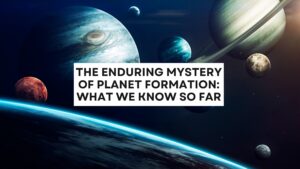What if your great-great-great-grand-whatever wasn’t even Homo sapiens?
When Bones Start Talking (and You’re Not Ready for What They Say)
Let me paint you a picture. You’re sitting in a lab—fluorescent lights humming, maybe a little too bright. There’s a faint, antiseptic smell in the air. In your gloved hand: a cracked molar. Looks like nothing, right? Just a dusty old tooth. But inside? A genetic whisper from 45,000 years ago.
It’s bizarre, really, how much we’ve learned from ancient human DNA. Mind-blowing, unsettling, inspiring—all at once. Every year, new studies show us just how wrong we were about our origins. And how complex the real story is.
It’s not a straight line. It’s a chaotic web—bloodlines knotted together in wild, passionate encounters (yes, they definitely got around). Let’s unravel five of the most outrageous, beautiful, sobering discoveries about us—humans—and our not-so-human cousins.
1. That Awkward Neanderthal Hookup Was a One-Time Thing—Basically
We’ve always thought of Neanderthals as those distant, kind-of-cool, kind-of-awkward cousins who maybe got left behind evolutionarily. Turns out—we hooked up. Just once-ish.
Recent studies (the kind that dig into DNA like it’s ancestral gossip) say modern humans mixed with Neanderthals during a very specific 7,000-year window, about 47,000 years ago. It wasn’t an ongoing saga—it was a fling. A cosmic weekend getaway in the Paleolithic.
And yet, here we are—with 1% to 2% Neanderthal DNA still lingering in our systems like a stubborn family trait. (Thanks, great-great-grandma… or whoever you were.)
2. A Human Map So Messy It Might Make You Cry (or Laugh Nervously)
There’s this idea we all walked out of Africa and strolled calmly into the rest of the world. But nope. Imagine more of a frantic, desperate shuffle—with people constantly dying out, reappearing, mixing, and moving like spilled paint on wet canvas.
Research involving 5,000 ancient genomes shows that Europe and parts of Western Asia were genetic roller coasters. Like Denmark? Literally three complete population replacements in just a thousand years. That’s not a long time. That’s… like, two seasons of The Crown.
So yeah—“ancestry” isn’t static. It’s a shape-shifter.
3. That Headache You Have? Blame an Ice Age Detour
Alright, this one hits home. You ever wonder why multiple sclerosis is more common in some places? Or why some populations have stubborn insulin issues?
Well. Ancient humans carried around more than fire and stone tools. They also carried genetic baggage—risk alleles for type 2 diabetes, Alzheimer’s, and, yes, MS.
One study tracked how a gene linked to MS traveled north with ancient Steppe herders. It ended up in Scandinavia, got cozy there, and… never left. If you’re Norwegian and have a family history of MS, part of the reason might be some guy 8,000 years ago who took a left turn instead of staying by the Black Sea.
Genetics isn’t destiny—but it’s got a sense of irony.
4. Who the Heck Were the Denisovans (and Why Are They So Mysterious?)
Picture this: It’s 2010. Scientists are poking around a cave in Siberia (as one does), and they find a single finger bone—tiny, brittle, possibly someone’s pinky. When they sequence the DNA, they don’t get Homo sapiens. Or Neanderthal.
They get something else entirely.
That’s how we met the Denisovans—our forgotten siblings. They weren’t just different; they were deeply unique. Strong jaws. Possibly high-altitude lungs (hello, Tibet). And they interbred with both Neanderthals and humans. Like a love triangle in a prehistoric soap opera.
And you probably have some Denisovan DNA too—especially if your roots trace to Melanesia or Southeast Asia.
5. The Cave Where Everyone Hung Out (and Possibly Argued Over Fire)
Let’s go back to that Denisova Cave. Because it wasn’t just the Denisovans living there. Nope—Neanderthals and modern humans were also roommates. Not at the same time necessarily—but sometimes, yes.
And guess what scientists found? Sediment DNA. That’s right. Not bone. Not hair. Just dirt. Dirt that held the genetic traces of these ancient people like a dusty scrapbook.
So what does that mean? Interactions. Possible cultural exchanges, shared tools, maybe shared meals. (Or maybe awkward silence in the corner while someone sharpened a spear.)
The cave has become a symbol of how entangled our human history is. Not clean. Not separate. A tangled web of love, war, and maybe grunted lullabies.
In Conclusion: This Story? It’s Still Being Written
Every time researchers extract DNA from another fossil, it’s like opening a time capsule from a world we barely understand. It’s humbling. Sometimes disturbing. And honestly—kind of hilarious.
We are the product of random meetings in frozen forests. Of migrations gone wrong. Of diseases passed down through generations and genes that tell a story older than the pyramids.
So the next time you look in the mirror and wonder, “Where did these cheekbones come from?”—just remember: the answer might be hiding in a cave in Siberia.
Or in a molar. Or in the wind. Or… well, we don’t know yet.
But we will.
Citations & Footnotes (for Nerds and Skeptics)
- John Hawks Blog – Top Discoveries from Ancient People’s DNA (2024)
- Associated Press – Ancient Human Genetics Highlight Reel
- Phys.org – DNA and Disease
- Science.org – Sequencing the Past
- Discovery News – Denisovans and Ancient Overlap









